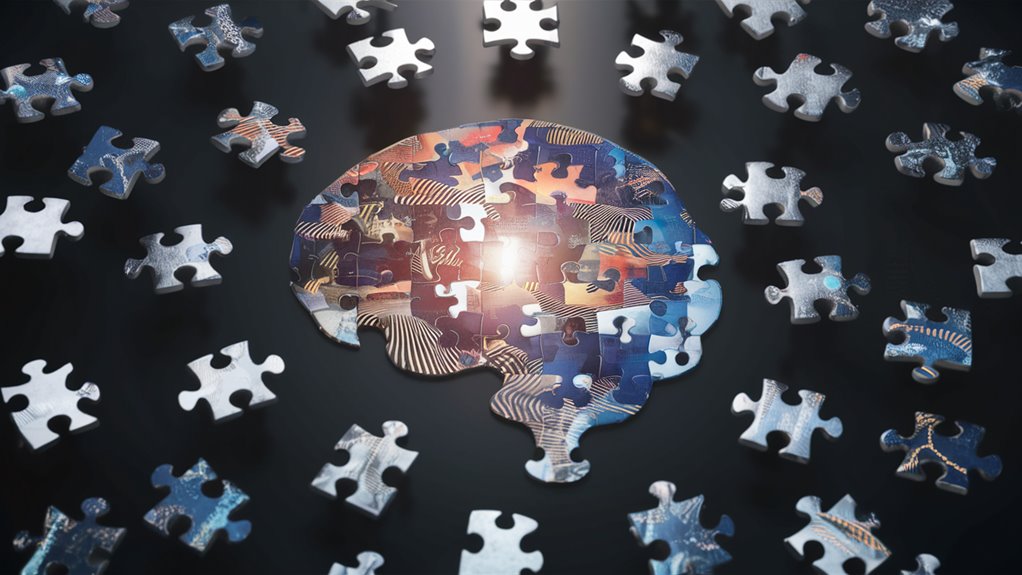
Mosaic Mindshift: Integrating Disparate Clues Into Unified Wagers
*Mosaic Mindshift: Integrating Disparate Clues Into Unified Wagers*
*The Power of Pattern Recognition*
*Strategic analysis* requires transforming scattered data points into meaningful insights through systematic evaluation. By implementing *structured frameworks* and *advanced pattern recognition*, analysts can integrate seemingly unrelated clues across multiple domains. This *cognitive approach* maintains analytical integrity while acknowledging potential biases in decision-making processes.
*Building the Analytical Framework*
*Correlation analysis*, *reliability assessment*, and *decision trees* serve as fundamental tools for converting fragmented information into *actionable intelligence*. These methodologies enable practitioners to:
- Identify hidden connections between disparate data points
- Evaluate the strength of emerging patterns
- Assess the reliability of various information sources
- Generate evidence-based strategic perspectives
*Advanced Integration Techniques*
*Data synthesis* becomes most powerful when weaving analytical threads into a *unified strategic perspective*. This requires:
- Cross-referencing multiple information sources
- Validating patterns across different domains
- Implementing systematic verification processes
- Developing comprehensive strategic models
*Frequently Asked Questions*
Q: What is a mosaic mindshift approach?
A: A systematic method of integrating diverse data points into coherent patterns using structured analytical frameworks.
Q: How does correlation analysis enhance pattern recognition?
A: It helps identify meaningful relationships between seemingly unrelated data points, revealing hidden connections.
Q: What role do decision trees play in data integration?
A: Decision trees provide a structured approach to evaluating options and potential outcomes based on available information.
Q: Why is bias awareness important in pattern recognition?
A: Understanding potential biases helps maintain analytical integrity and ensures more objective conclusions.
Q: How can analysts validate emerging patterns?
A: Through cross-referencing multiple sources, applying reliability assessments, and utilizing systematic verification processes.
*Key Takeaways*
The *mosaic mindshift methodology* transforms scattered information into valuable insights through:
- Systematic pattern recognition
- Evidence-based analysis
- Structured framework implementation
- Comprehensive data integration
- Strategic perspective development
Core Principles of Mosaic Analysis

Understanding Core Principles of Mosaic Analysis
The Foundation of Modern Problem-Solving
*Mosaic analysis* stands as a powerful analytical framework that transforms complex challenges into manageable components.
Three essential principles drive this methodology: *decomposition*, *pattern recognition*, and *synthesis*.
Breaking Down Complex Problems
*Decomposition* serves as the cornerstone of mosaic analysis, enabling analysts to create detailed maps of interconnected elements.
This systematic approach allows for thorough examination of individual components while maintaining awareness of their relationships within the larger system.
Pattern Recognition and Data Analysis
*Pattern recognition* combines structured observation with analytical insight. Successful practitioners implement:
- *Systematic data collection*
- *Correlation analysis*
- *Cross-reference validation*
- *Bias awareness protocols*
The Art of Synthesis
The *synthesis phase* requires careful reconstruction of analyzed elements into coherent conclusions. Key aspects include:
- *Evidence-based integration*
- *Hypothesis testing*
- *Alternative scenario analysis*
- *Continuous validation*
Frequently Asked Questions
Q: What makes mosaic analysis different from traditional analytical methods?
A: Mosaic analysis uniquely combines systematic decomposition with pattern recognition and structured synthesis, offering a more comprehensive problem-solving approach.
Q: How does decomposition work in mosaic analysis?
A: Decomposition breaks complex problems into smaller, manageable components while maintaining awareness of their interconnections.
Q: What role does pattern recognition play?
A: Pattern recognition identifies meaningful correlations and relationships between components through systematic observation and data analysis.
Q: How can analysts avoid confirmation bias?
A: Analysts should maintain detailed records of both supporting and contradicting evidence while actively seeking alternative explanations.
Q: What makes synthesis successful in mosaic analysis?
A: Successful synthesis requires careful integration of findings, rigorous testing against alternative hypotheses, and openness to new interpretations as data emerges.
Pattern Recognition Across Different Fields
Pattern Recognition Across Professional Fields: A Comprehensive Guide
Understanding Cross-Domain Pattern Recognition
*Pattern recognition* represents a fundamental cognitive skill that manifests differently across professional domains.
While the core mechanisms remain consistent, each field develops unique frameworks for identifying and analyzing patterns.
*Domain experts* leverage these specialized approaches to derive insights and make informed decisions.
Key Applications in Professional Fields
Medical Pattern Recognition
*Healthcare professionals* utilize pattern recognition to:
- Identify symptom clusters
- Diagnose complex conditions
- Recognize treatment response patterns
- Track disease progression
Financial Analysis Patterns
*Market analysts* employ pattern recognition for:
- *Technical analysis* of price movements
- Trading volume interpretation
- Market trend identification
- Risk pattern assessment
Cross-Pollination of Pattern Recognition Skills
*Interdisciplinary application* of pattern recognition enhances problem-solving capabilities across fields. For example:
- Detective methodologies inform business analysis
- Biological systems thinking aids urban planning
- Engineering principles enhance medical diagnostics
Breaking Domain Boundaries
*Innovation emergence* often results from applying pattern recognition frameworks across different fields.
This *cross-domain approach* helps professionals:
- Overcome cognitive biases
- Develop fresh perspectives
- Generate novel solutions
- Enhance analytical capabilities
Frequently Asked Questions
Q: How does pattern recognition differ between fields?
A: While the fundamental cognitive process remains similar, each field develops specialized frameworks based on domain-specific requirements and contexts.
Q: Can pattern recognition skills be transferred between disciplines?
A: Yes, pattern recognition skills are highly transferable and can enhance problem-solving capabilities across different professional domains.
Q: What role does experience play in pattern recognition?
A: Experience helps develop refined pattern recognition abilities within specific domains, but may also create cognitive biases that limit creative solutions.
Q: How can professionals improve their pattern recognition skills?
A: Professionals can enhance their pattern recognition abilities by studying patterns across different fields and actively applying cross-domain thinking.
Q: What’re the benefits of cross-domain pattern recognition?
A: Cross-domain pattern recognition leads to innovative solutions, broader perspectives, and more effective problem-solving approaches.
Maximizing Pattern Recognition Potential
*Successful pattern recognition* across domains requires:
- Active engagement with multiple disciplines
- Openness to new analytical frameworks
- Regular practice in pattern identification
- Conscious effort to overcome domain-specific biases
This comprehensive approach to pattern recognition enables professionals to develop more robust analytical skills and generate innovative solutions to complex problems.
Building Your Evidence Framework

Building a Robust Evidence Framework
Fundamental Organization Principles
*Evidence frameworks* require systematic organization to transform 메이저놀이터 먹튀검증 scattered information into actionable insights.
The foundation starts with *categorizing evidence* across three key dimensions: *reliability assessment*, *source credibility*, and *contextual relevance*.
Data points must be arranged on a *confidence spectrum*, ranging from speculative indicators to verified facts, while maintaining vigilance against *confirmation bias*.
Structuring Your Evidence Base
*Direct evidence*, *circumstantial patterns*, and *inferential connections* form the core pillars of a comprehensive framework.
Successful analysis depends on clear documentation of *evidence chain vulnerabilities* and *knowledge gaps*. This transparent approach prevents overconfidence in preliminary conclusions while enabling thorough evaluation of both *supporting evidence* and *contradicting data points*.
Evidence Integration Strategy
*Pattern recognition* and *data integration* require methodical evaluation of new information against existing frameworks.
Effective analysis demands resistance to *narrative bias* – letting evidence shape conclusions rather than forcing data to fit preconceptions. This approach ensures *analytical integrity* while building a *robust foundation* for decision-making.
FAQ: Evidence Framework Development
Q: What’re the key components of an evidence framework?
A: Essential components include reliability assessments, source verification, contextual analysis, and clear categorization of direct versus circumstantial evidence.
Q: How do you maintain objectivity when building evidence frameworks?
A: Implement systematic tracking of both supporting and contradicting evidence, document uncertainties, and regularly review for potential confirmation bias.
Q: What role does source credibility play?
A: Source credibility is fundamental for establishing evidence reliability and should be evaluated based on expertise, methodology, and potential conflicts of interest.
Q: How often should evidence frameworks be updated?
A: Regular updates are essential as new information emerges, with continuous evaluation of how new data points affect existing patterns and conclusions.
Q: What’re common pitfalls in evidence framework construction?
A: Major pitfalls include confirmation bias, overlooking contradictory evidence, force-fitting data to preexisting narratives, and insufficient documentation of uncertainties.
Making Connections Through Data Points
*Making Connections Through Data Points: A Comprehensive Guide*
*Understanding Data Relationships*
*Data connection analysis* requires a systematic approach to identify meaningful patterns and relationships across diverse datasets.
Treating each data point as a node within an interconnected network enables the discovery of significant correlations while minimizing false pattern recognition.
The key lies in establishing *verifiable connections* through evidence-based methodologies.
*Advanced Pattern Recognition Techniques*
*Strategic data plotting* across temporal, categorical, and relational axes reveals critical insights through cluster identification and outlier analysis.
Implementing robust *confirmation bias checks* strengthens the validity of discovered relationships.
This systematic evaluation process helps distinguish between *causal connections* and mere coincidences.
*Data Validation Framework*
*Triangulation methods* enhance analytical accuracy by cross-referencing multiple data sources.
A sophisticated *weighted scoring system* evaluates connection strength based on source reliability and supporting evidence quality.
This approach maintains data integrity by explicitly documenting gaps rather than making unsupported assumptions.
*Frequently Asked Questions*
Q: How do you identify reliable data connections?
A: Through systematic pattern analysis, multiple source verification, and evidence-based validation methods.
Q: What role does confirmation bias play in data analysis?
A: It can lead to false pattern recognition, requiring active measures to seek contradicting evidence.
Q: How can triangulation improve data connection accuracy?
A: By cross-referencing multiple data sources to validate potential relationships and strengthen findings.
Q: Why is gap documentation important in data analysis?
A: It maintains transparency and prevents unsupported assumptions from compromising data integrity.
Q: What makes a scoring system effective for evaluating connections?
A: Weighting based on source reliability and evidence strength ensures more accurate relationship assessment.
Risk Assessment in Complex Decisions

Comprehensive Guide to Risk Assessment in Complex Decisions
Understanding Risk Assessment Fundamentals
*Risk assessment* in complex decision-making requires systematic evaluation of *multiple interconnected factors*.
Breaking down risks into *quantifiable components* enables objective analysis, preventing emotional bias from clouding judgment.
This structured approach transforms uncertain variables into manageable data points for informed decision-making.
Three-Tier Risk Classification System
Primary Impact Risks
*Direct outcome risks* form the foundation of risk assessment. These immediate consequences demand priority attention and clear mitigation strategies.
Secondary Impact Analysis
*Secondary ripple effects* emerge from initial impacts, creating complex chains of consequences. Understanding these interconnections helps predict potential cascading failures.
Systemic Risk Evaluation
*Systemic risks* threaten entire decision frameworks. These comprehensive threats require robust contingency planning and continuous monitoring.
Advanced Risk Assessment Tools
*Decision trees* and *sensitivity analysis* provide powerful frameworks for testing various risk scenarios.
These tools help identify critical variables and their potential impact on outcomes.
*Black swan events* – rare but catastrophic possibilities – must be factored into comprehensive risk models.
FAQs About Risk Assessment
Q: How do you quantify risk in complex decisions?
A: Utilize probability weights, statistical modeling, and impact matrices to assign numerical values to risk factors.
Q: What role does confirmation bias play in risk assessment?
A: Confirmation bias can lead decision-makers to favor information supporting existing beliefs, necessitating conscious effort to maintain objectivity.
Q: How can organizations prepare for black swan events?
A: Develop robust contingency plans, maintain financial reserves, and regularly stress-test systems against extreme scenarios.
Q: What makes a risk assessment framework effective?
A: Effective frameworks combine quantitative analysis, qualitative insights, and systematic monitoring of key risk indicators.
Q: How often should risk assessments be updated?
A: Regular reviews are essential, with frequency determined by industry volatility and organizational change rate.
Strategic Risk Management Tips
- 무제한 경기장에서 전략 수집
- Maintain *detailed risk registers*
- Develop *clear escalation procedures*
- Establish *regular review cycles*
- Create *comprehensive documentation*

